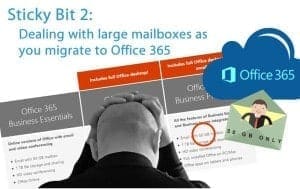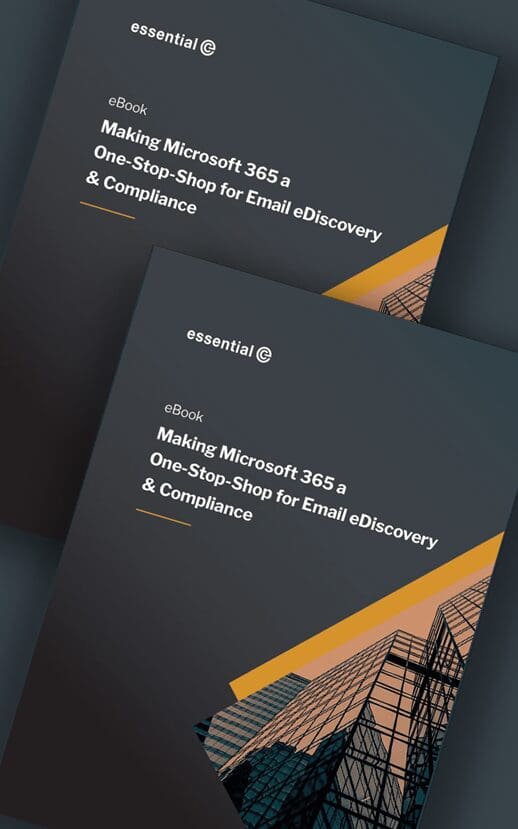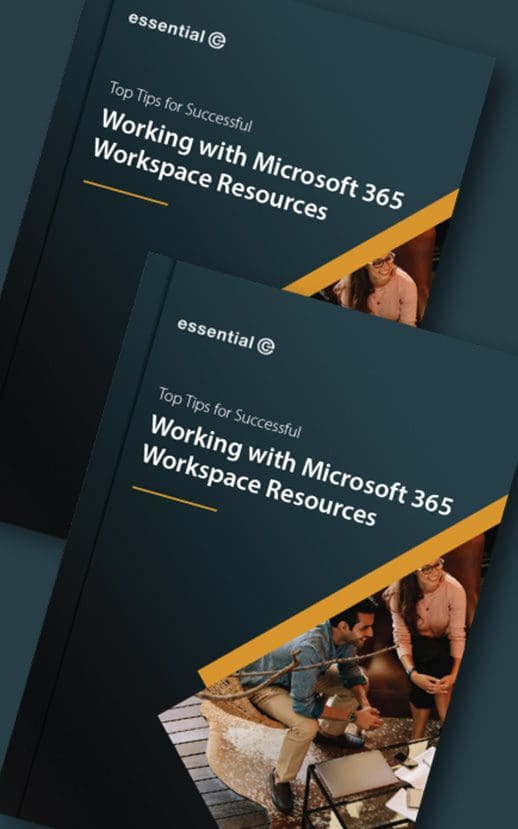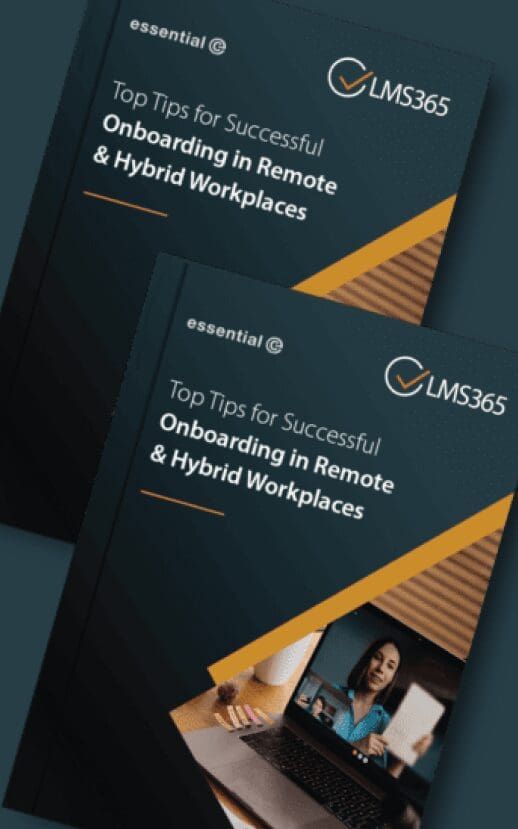Email Archive Migration
Understanding Email Archive Migration: A Comprehensive Guide
Email archives have been common place in enterprises for over 25 years, and for 2 main reasons:
- To keep email servers to a manageable size – Email archiving was commonly used to minimise mailbox sizes by moving older or larger emails to a dedicated archive, and replacing the original emails with much smaller shortcuts (as known as stubs) for easy retrieval.
- To meet compliance needs – Another reason for email archiving is to capture all or selected emails to a separate, tamper-proof archive to meet regulatory requirements and support eDiscovery. This process is often referred to as email journaling.
What Is Email Archive Migration?
Email archive migration is the process that needs to take place to accommodate changes in your email environment or practical circumstances, such as:
- Company change: A company merger or acquisition, where email archiving needs to be consolidated to a new platform
- Archive vendor change: Preserving existing archives when moving away from an email archive platform that has been ‘end of lifed’ or has become too costly
- Email system change: Transitioning to a new email platform that includes archiving capabilities
- Platform change: A move from an on-premises email environment to the cloud.
As well as moving email records from one location to another, the act of migrating an email archive might also involve:
- Thinking about the end user experience: E.g., updating or replacing shortcuts in users’ mailboxes for a seamless migration, migrating with users still active.
- Selecting what to migrate: E.g.. Making decisions about what email records to migrate and where to migrate them,
- Usability post migration: E.g. you may need to convert email file formats so they are usable/searchable in the target platform,
- Practical issues: For example, dealing with overly large email attachments, bandwidth of the source/target environments.
An email archive migration must also include substantial checks and balances to ensure the integrity of emails as they are physically moved. This is particularly the case where the emails have been archived to meet regulatory and compliance needs.
4 Key Areas to Check In Your Email Archive Migration
Migrating email archives can be complex, and several challenges may arise:
1. Will the email archive migration be seamless to end users?
End users rely on being able to locate and retrieve their archived emails quickly and easily to do their jobs. This expectation remains the same, even when the business migrates to a new platform.
To ensure minimal disruption to end users during and after migration, your chosen email archive migration approach should include:
- Shortcut conversion. If the target system allows retrievals via shortcuts, you need a solution that can update the shortcuts in users’ mailboxes as part of the migration.
- Shortcut ‘re-hydration’. If you’re migrating to a new email platform that has a large enough capacity, your chosen migration solution should be able to retrieve archived emails and migrate them to a logical location where they can easily be found. For example, if you’re migrating to Exchange online, you might want to migrate recently archived items to users’ primary mailboxes and emails older than say, 1 year, into their Exchange online archive mailbox.
- Shortcut Attention to Detail. There are quite a few things to look out for when handling shortcuts, including:
- Where users have re-foldered their shortcuts, will they end up in the right place post-migration?
- Can deleted shortcuts be excluded from your migration or moved to an alternate location (e.g. hidden folders in Microsoft 365). This ensures those items are available for eDiscovery purposes but avoids user confusion or concern when deleted items suddenly reappear.
- Will shortcuts that been forwarded to co-workers be accessible to the original recipient(s) post migration?
- Zero downtime. Your email archive migration should ideally be able to take place whilst users are still working with the archive.
There are many other edge cases that may arise during your migration that need to be addressed.
For instance, we encountered an issue where an email with a large attachment remained ‘in draft’ because it exceeded the company’s message size limits, causing it to fail during migration. At Essential, we proactively identify and resolve such size-related issues before the migration process begins.
2. Will the email archive migration meet our compliance needs?
If you’ve been archiving emails to meet your compliance needs, then ensuring a fault-free migration of your email records to the intended target platform is paramount.
Any investigation or eDiscovery carried out against migrated emails will seek to validate that the data has been handled correctly and that nothing was missed out.
- Will there be an inventory of your email archive migration? A chain-of-custody report showing that data items have been successfully moved is flawed if it doesn’t prove everything in the archive has been accounted for. For example, if you’re migrating from an on-premises email archive into Microsoft 365, your migration should include 1:1 mappings of the ID of the item in the source archive and the ID of the new item in Microsoft 365.
- Can we reflect our retention policies as we move? An email archive migration is an opportunity to review and action your email record retention policies. If you haven’t actively been deleting emails older than your retention policy to date, a migration is the opportunity to exclude these emails. You will also need to ensure that the relevant retention policies are implemented in the target system for all the emails being migrated.
- Will all email metadata be preserved? Make sure your chosen migration supports the migration of email meta data including BCC’d recipients and the members of a distribution list members at the time an email was sent/received. Preservation of such data is vital in ensuring complete and accurate eDiscovery ‘post migration’.
- What happens if an email fails to migrate? Ideally your migration should automatically re-try any failed items for a specified number of times and flag any permanently failed items for a fix where possible.
- How will an archived email journal be migrated? If you’ve been archiving journalled emails to meet your business and compliance needs, a move to Microsoft 365 presents a challenge in that Migration 365 itself does not provide a conventional journal mailbox service. This creates added complexity that must be addressed by your chosen migration partner. You can read more about these here.
TIP: An important point on meeting compliance needs as you migrate is to consider what happens to your legacy archive post-migration. For example, once your migration is complete and tested, it is best practice to delete your legacy archive, as long as this deletion is in line with your stated email retention policies.
3. Does your email archive migration path offer enough flexibility?
No email archive project is the same, and you might need to make several decisions about how to deal a range of challenges, including:
- Where to move messages relating to deleted shortcuts
- What to do with mailbox content belonging to ‘leavers’
- How to preserve retention policies and other classifications
If your email archive migration needs to run in parallel with an email platform migration (e.g. from Exchange on-premises to Exchange online), it’s worth asking the following questions:
- Will our migration fit alongside a planned mailbox migration? For example, you may wish to sequence your email archive migration alongside a move from on-premises Exchange to Exchange online.
- Can we determine where our archives will be migrated to? Some data may no longer have a logical home (such as that belonging to leavers). What should be done with these to ensure future governance and ‘discoverability’ whilst minimising Microsoft 365 mailbox licensing costs?
- Can we implement migration policies? For example, you may wish to migrate items older than a given age to In-Place Archives to prevent users’ primary mailboxes from bloating.
- Can we support an inter-domain email archive migration? For example, re-writing addresses to support inter-domain migrations, and combining multiple archives that may have inadvertently been created for the same individual, e.g. due to re-locations and name-changes.
Note: If you’re migrating between different email platforms, such as Lotus Notes to Exchange, your email archive migration should also cater for email format conversions of archived emails – whilst maintaining format integrity.
4. Will your email archive migration scale and be fast enough to address your requirements?
- What speeds can your migration reach? The quicker you can migrate, the sooner you stop having to maintain your old archive and start using functionality in your new platform (e.g. for data governance and eDiscovery). Establish the typical TBs per day migrated by your chosen migration specialist and any factors that may impact your actual migration speeds (such as Microsoft throttling).
- Scalability: Large volumes of data increase the complexity of migration, making loss prevention critical.
- Who will oversee completion of your migration? Tracking migration progress, scheduling any batches of users, and reporting on any issues is a vital component of an email archive migration. Determine who will be responsible for migration oversight.
- Can we manage our own migration? Once your migration is in flight, you may want the flexibility to manage the migration process ‘in house’.
It’s also worth looking at where your migration will physically run. The migration solution offered by Essential can be run in the cloud or on virtual servers within our client’s on-premises environment. This may be preferred where capacity is available, it can also help reduce any hosted server transaction costs.
About Essential’s Email Archive Migrations
Essential has been migrating emails and email archives for over 20 years and has completed almost 1,000 migrations.
We offer a proven, best of breed migration approach that can address the needs of the largest, most complex email archive and email journal migrations in the world.
Our customers also benefit from a flexible approach that saves time, costs and storage space as you move.
Get in touch to find out more.
Let’s have a no obligation chat about your migration project.


















